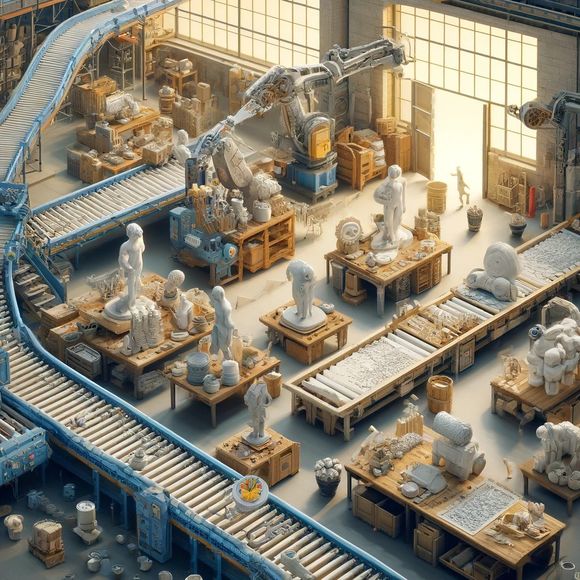Papier-mâché is a versatile and affordable art form that can be used to create a wide variety of objects, from sculptures and masks to decorative items and furniture. However, creating papier-mâché pieces for mass production can be a time-consuming and labor-intensive process.
Rapid prototyping techniques can be used to streamline the production of papier-mâché art, making it more feasible for commercial applications. These techniques involve the use of digital tools and computer-controlled machines to create physical prototypes of objects quickly and efficiently.
Benefits of Rapid Prototyping for Papier-Mâché Production
There are several benefits to using rapid prototyping techniques for papier-mâché production:
- Reduced time and labor costs: Rapid prototyping can significantly reduce the time and labor required to create papier-mâché prototypes. This can lead to lower production costs and faster time to market.
- Improved accuracy and consistency: Rapid prototyping techniques can produce highly accurate and consistent prototypes. This can help to ensure that the final papier-mâché products are of high quality.
- Increased design flexibility: Rapid prototyping makes it easier to experiment with different designs and make changes to prototypes quickly and easily. This can lead to more innovative and creative papier-mâché products.
Rapid Prototyping Techniques for Papier-Mâché
There are a number of different rapid prototyping techniques that can be used for papier-mâché production. Some of the most common techniques include:
- 3D printing: 3D printing is a popular rapid prototyping technique that can be used to create three-dimensional objects from digital files. There are a number of different types of 3D printers available, each with its own strengths and weaknesses.
- Computer numerical control (CNC) machining: CNC machining is another common rapid prototyping technique that can be used to create objects from digital files. CNC machines use computer-controlled tools to cut, mill, or drill materials such as wood, plastic, and metal.
- Laser cutting: Laser cutting is a rapid prototyping technique that uses a laser to cut materials such as paper, cardboard, and acrylic. Laser cutters are precise and can create intricate designs.
Applications of Rapid Prototyping for Papier-Mâché
Rapid prototyping can be used for a variety of applications in papier-mâché production. Some examples include:
- Creating prototypes for new products: Rapid prototyping can be used to create prototypes for new papier-mâché products. This can help to ensure that the products are well-designed and meet the needs of the target market.
- Creating molds for mass production: Rapid prototyping can be used to create molds for mass production of papier-mâché products. This can help to reduce production costs and increase consistency.
- Creating custom pieces: Rapid prototyping can be used to create custom papier-mâché pieces for individual customers or businesses. This can be a valuable service for businesses that need to create unique or personalized products.
The Future of Rapid Prototyping for Papier-Mâché
Rapid prototyping is a rapidly evolving field, and new techniques are being developed all the time. As these techniques continue to improve, they are likely to become even more widely used in papier-mâché production. This could lead to the development of new and innovative papier-mâché products that are more affordable, accurate, and consistent than ever before.
I hope this helps! Let me know if you have any other questions.
